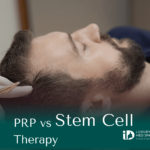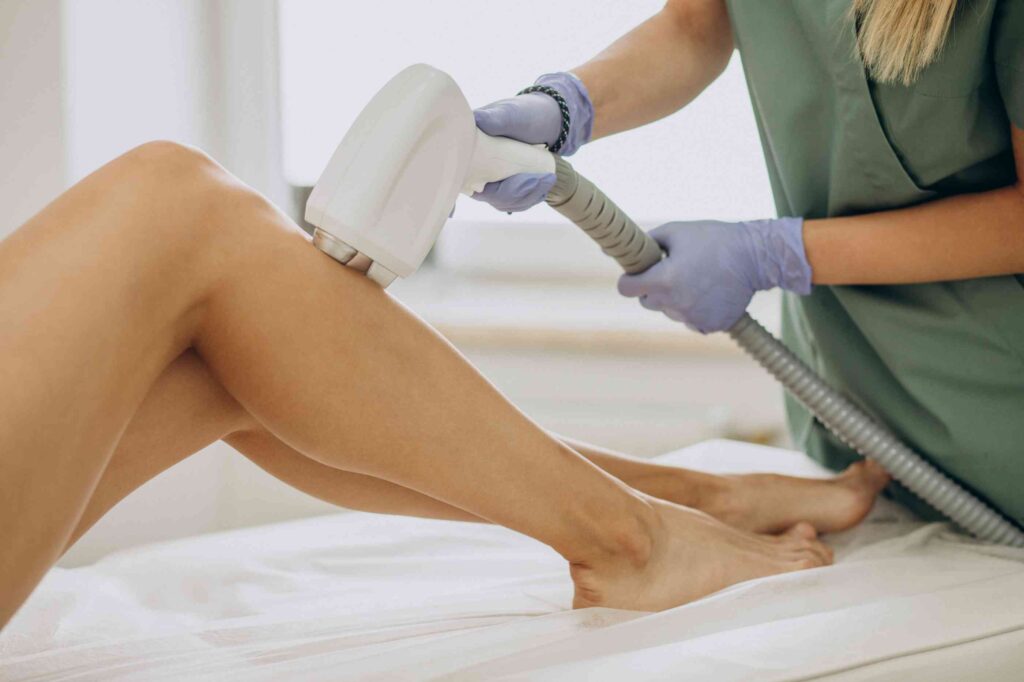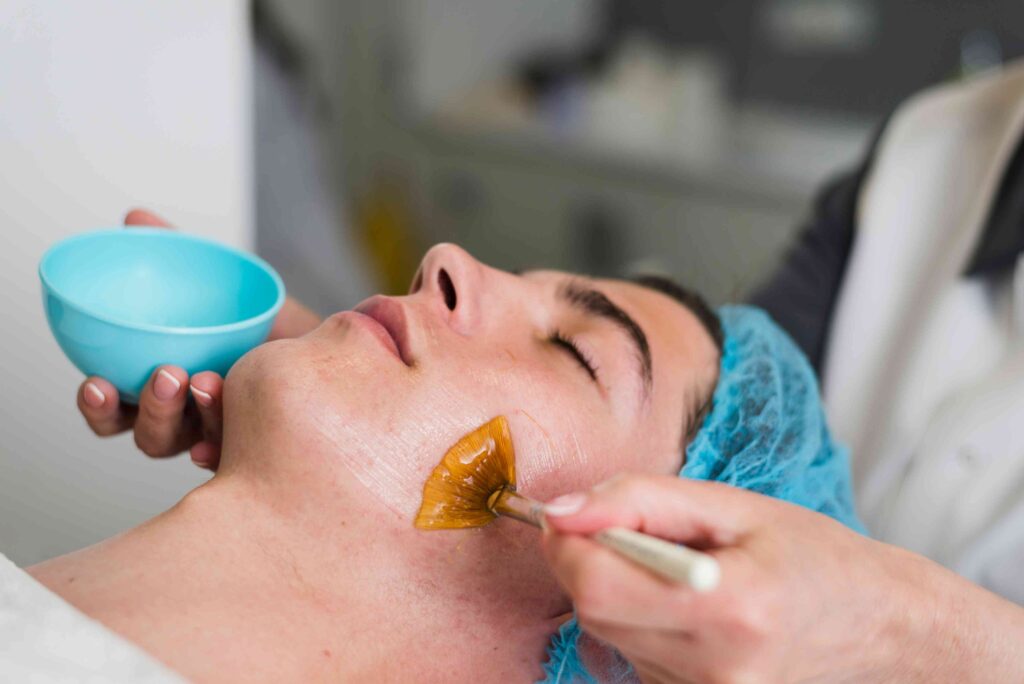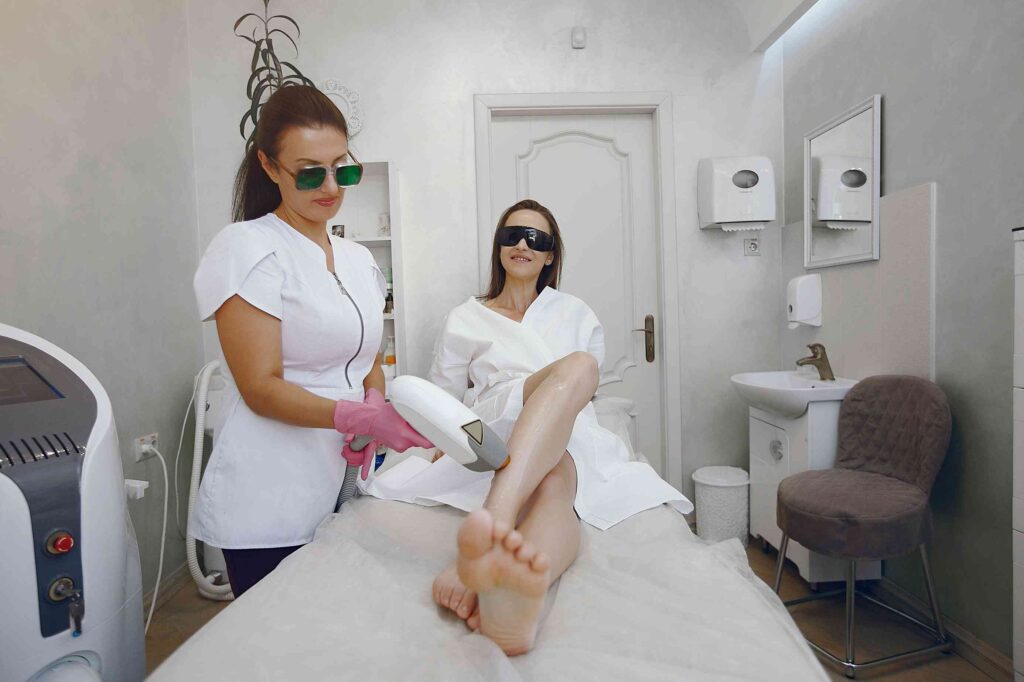Acne prone skin can be challenging to manage, with breakouts, scars, and uneven texture being persistent concerns. Chemical peels have emerged as a highly effective treatment for addressing these issues. By using specially formulated solutions to exfoliate the skin, chemical peels not only treat active acne but also improve overall skin health. We will explore …
Acne prone skin can be challenging to manage, with breakouts, scars, and uneven texture being persistent concerns. Chemical peels have emerged as a highly effective treatment for addressing these issues. By using specially formulated solutions to exfoliate the skin, chemical peels not only treat active acne but also improve overall skin health. We will explore how chemical peels benefit acne prone skin, the types of peels available, and essential aftercare tips to maximize results.
What Are Chemical Peels?
A chemical peel is a dermatological procedure that involves applying a chemical solution to the skin to remove its outermost layers. This process encourages the regeneration of new, healthier skin and addresses a variety of skin concerns, including acne, hyperpigmentation, and fine lines. Depending on the depth of the peel – superficial, medium, or deep – the treatment targets different layers of the skin to provide customized results.
For individuals with acne prone skin, chemical peels can be a game changer making it one of the best facial treatment. They work by addressing several underlying causes of acne, such as excess oil production, clogged pores, inflammation, and acne scars.
How Chemical Peels Help Acne Prone Skin
1. Deep Exfoliation and Pore Unclogging
One of the primary causes of acne is the buildup of dead skin cells and oil within pores, leading to blockages and subsequent breakouts. Chemical peels use exfoliating agents, such as salicylic acid, glycolic acid, or lactic acid, to dissolve these dead skin cells. This deep exfoliation not only clears existing clogged pores but also prevents future blockages, reducing the likelihood of acne flare-ups.
2. Regulation of Sebum Production
Excessive oil (sebum) production is a hallmark of acne prone skin. Salicylic acid, a common ingredient in chemical peels, is a beta hydroxy acid (BHA) that penetrates deeply into the skin’s pores to reduce oil production. By controlling sebum levels, chemical peels help minimize the oily sheen often associated with acne prone skin, leading to fewer breakouts over time.
3. Reduction of Inflammation and Bacterial Growth
Inflammation and bacteria (particularly Propionibacterium acnes, now known as Cutibacterium acnes) are significant contributors to acne. Many chemical peels, especially those containing salicylic acid, possess anti-inflammatory and antibacterial properties. These properties help reduce the redness and swelling associated with active acne, while also curbing bacterial proliferation on the skin’s surface.
4. Treatment of Acne Scars
Acne scars, whether they are atrophic (depressed) or hyperpigmented, can be as distressing as active breakouts. Chemical peels stimulate collagen production, which is essential for healing and repairing atrophic scars. By removing damaged skin layers and encouraging new skin growth, peels improve the appearance of scars over time. They also address post-inflammatory hyperpigmentation (PIH) by fading dark spots left behind by healed acne lesions.
5. Improvement in Skin Texture and Tone
Acne prone skin often suffers from uneven texture and discoloration. Chemical peels promote smoother skin by removing rough patches and encouraging cell turnover. Additionally, they help even out skin tone by lightening areas of hyperpigmentation caused by acne. With regular treatments, the skin becomes more uniform and radiant.
Types of Chemical Peels for Acne Prone Skin
Chemical peels come in various types, each with specific benefits for acne prone skin. Choosing the right peel depends on the severity of acne, skin type, and individual skin concerns.
Superficial Peels
Active Ingredient: Glycolic acid, salicylic acid, or lactic acid.
Target Area: Epidermis (outermost skin layer).
Benefits: Superficial peels are ideal for mild acne, blackheads, and whiteheads. They offer gentle exfoliation, improve skin texture, and require minimal downtime.
Best For: Individuals with sensitive or mild acne prone skin.
Medium Peels
Active Ingredient: Trichloroacetic acid (TCA) or a higher concentration of glycolic acid.
Target Area: Epidermis and upper dermis.
Benefits: Medium peels address moderate acne, superficial scars, and pigmentation issues. They offer more noticeable results but may involve a longer recovery period (a few days to a week).
Best For: Those with moderate acne and early signs of scarring or discoloration.
Deep Peels
Active Ingredient: Phenol or high-concentration TCA.
Target Area: Deeper layers of the dermis.
Benefits: Deep peels are effective for severe acne scars and significant skin texture issues. However, they come with a longer recovery time and a higher risk of side effects, making them suitable only for specific cases.
Best For: Individuals with severe acne scars and significant skin damage, typically under professional supervision.
Preparing for a Chemical Peel
Preparation is key to achieving optimal results from a chemical peel. Here are essential steps to follow before undergoing treatment:
- Consult a Dermatologist: Always seek professional advice to determine the most suitable type of peel for your skin type and concerns.
- Avoid Retinoids and Exfoliants: Discontinue the use of retinol, exfoliating scrubs, or other potent skincare products at least one week before the procedure.
- Limit Sun Exposure: Protect your skin from UV rays by wearing sunscreen and avoiding direct sun exposure in the weeks leading up to the peel.
- Perform a Patch Test: If you’re using a new product or undergoing a peel for the first time, a patch test can help prevent adverse reactions.
Aftercare Tips for Chemical Peels
Post-peel care is crucial to ensure the skin heals properly and the results are long-lasting. Follow these guidelines for optimal recovery:
- Moisturize Regularly: Keep your skin hydrated with a gentle, fragrance-free moisturizer to prevent dryness and peeling.
- Use Sunscreen: The skin becomes highly sensitive after a chemical peel. Apply a broad-spectrum sunscreen with at least SPF 30 daily to protect against UV damage.
- Avoid Harsh Products: Refrain from using retinoids, exfoliants, or strong acids for at least one week post-peel.
- Don’t Pick or Peel: Allow the skin to shed naturally without picking at flaking areas to avoid scarring or irritation.
- Stay Hydrated: Drinking plenty of water supports skin hydration and healing from within.
Potential Side Effects and Risks
While chemical peels are generally safe when performed by a qualified professional, they can cause side effects in some cases. These may include:
Redness and irritation.
Temporary peeling or flaking.
Increased sensitivity to sunlight.
Rarely, scarring or infection (typically with deeper peels).
It’s essential to follow all pre- and post-treatment instructions to minimize risks and achieve the best possible outcome.
Who Should Avoid Chemical Peels?
Chemical peels may not be suitable for everyone. People with the following conditions should exercise caution or avoid peels altogether:
Active infections or open wounds on the skin.
Severe rosacea or eczema.
Pregnancy or breastfeeding (consult with a doctor).
A history of keloid scars or severe allergic reactions.
Conclusion
Chemical peels are a powerful tool for managing acne prone skin. From unclogging pores and reducing inflammation to improving scars and skin tone, they offer numerous benefits. However, achieving the best results requires selecting the right type of peel, following proper preparation and aftercare, and consulting with a dermatologist to ensure safety and effectiveness. There are also other facial treatments like Microdermabrasion, HA microneedling etc. which is beneficial for better beauty and wellness.
For those struggling with persistent acne or post-acne concerns, chemical peels can provide a pathway to clearer, healthier, and more confident skin. With consistent care and professional guidance, you can unlock the full potential of this transformative treatment. Over time, these treatments not only address existing skin issues but also enhance the skin’s resilience against future breakouts. By committing to a well-rounded skincare regimen and embracing the benefits of chemical peels, you can achieve lasting improvements and a renewed sense of self-confidence.







